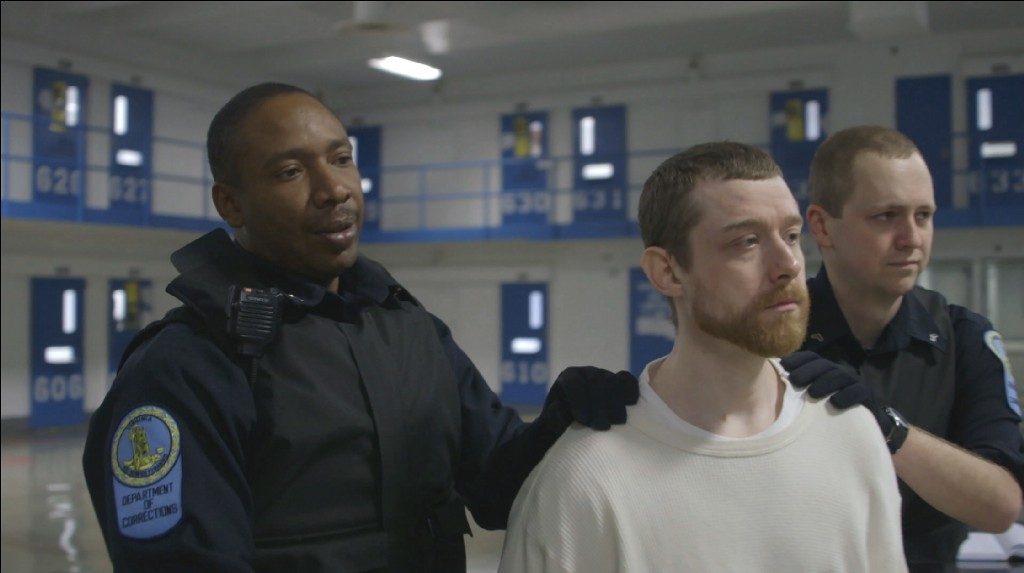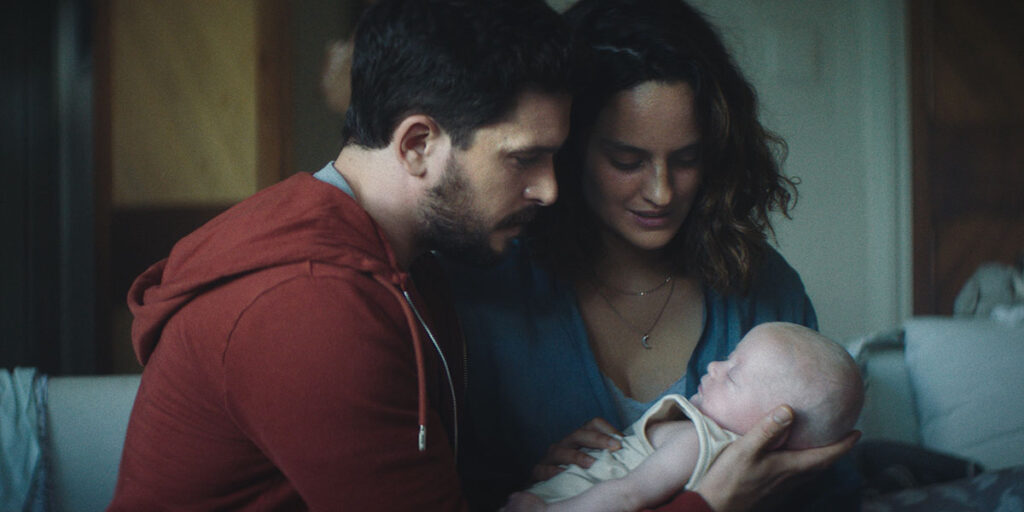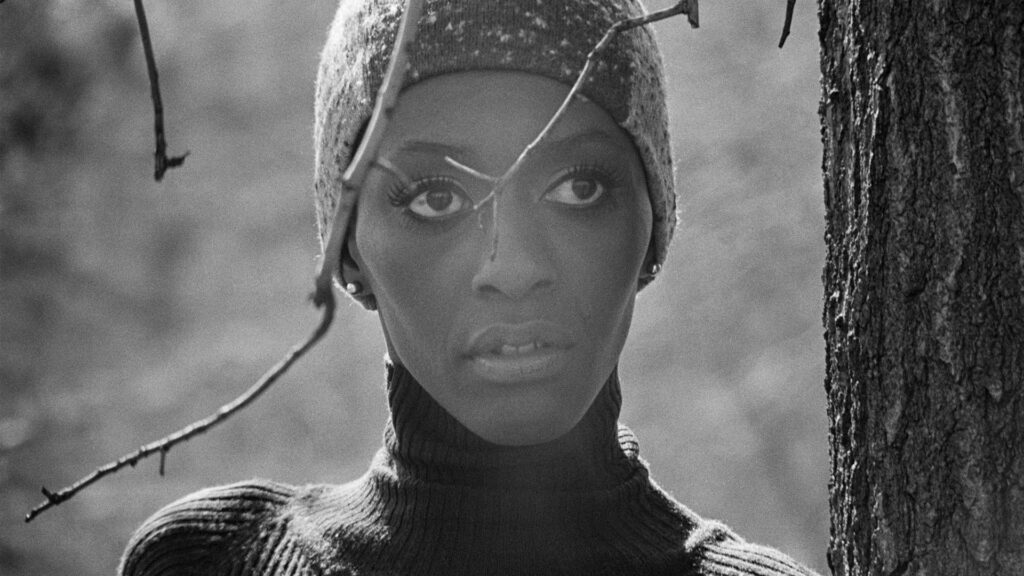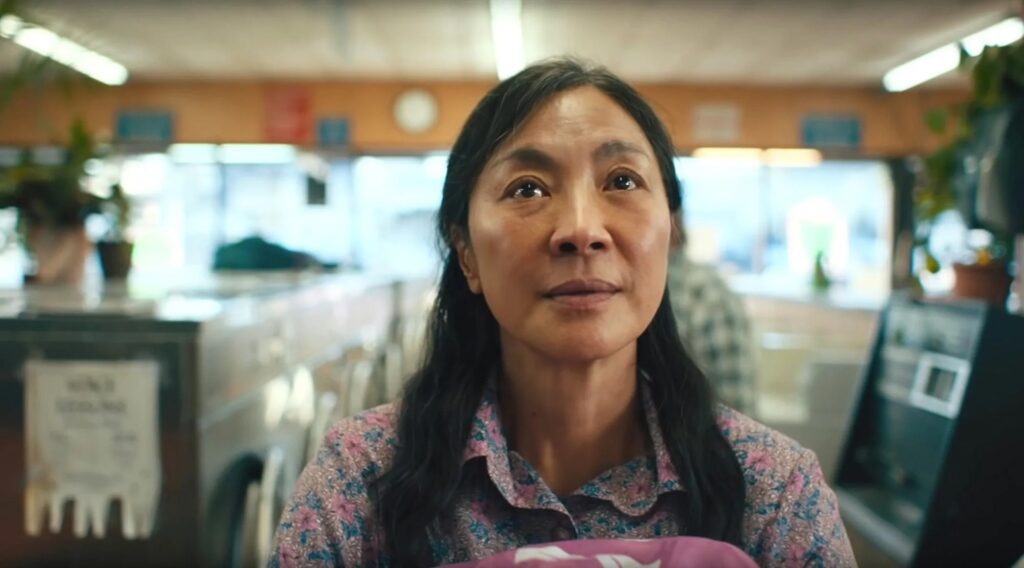Kristi Jacobson’s 2013 film “A Place at the Table” premiered at the Sundance Film Festival. The film won the IDA’s prestigious Pare Lorentz Award and was nominated for Best Feature Documentary by the Producers Guild of America. In 2006, Jacobson premiered her film, “Toots” at the Tribeca Film Festival before its critically acclaimed theatrical run. “Toots” garnered several nominations and awards, including the National Board of Review’s Top Documentary Award. Jacobson’s directorial debut was “American Standoff,” produced by two-time Oscar-winning filmmaker Barbara Kopple. (Press materials)
“Solitary” will premiere at the 2016 Tribeca Film Festival on April 16.
W&H: Describe the film for us in your own words.
KJ: “Solitary” explores with startling intimacy the lives of inmates and corrections officers in one of America’s most notorious supermax prisons, built to hold inmates in 8×10 cells, 23-hours-a-day, for months, years and sometimes decades. With unprecedented access, this immersive film captures a complex, unexpected and deeply moving portrait of life inside and raises provocative questions about punishment in America today.
W&H: What drew you to this story?
KJ: I studied sociology in college — specifically criminology and juvenile justice. Working at a courthouse in Raleigh, North Carolina opened my eyes to the complete and utter brokenness of the juvenile justice system. After that experience, I decided to tackle the system itself, rather than work within it.
I understood from an early age the power of film and thus began my life journey as documentary filmmaker. I continue to be drawn to stories that explore that brokenness I observed up close — how it got so broken and how it can be fixed. I am also interested in people and what drives them during the best of times, what keeps them going during the worst of times? What are the societal forces at play that contribute, and in many cases determine, our experience? Ultimately, I am interested in how, in the end, we are all the same — humans striving for connection.
I’ve now made films about many different subjects, but this was always the film I was destined to make. After the wide release of “A Place at the Table,” I felt I was in a position where I might be able to get funding for a film in this space. I was initially interested in how kids are locked up in solitary confinement — in juvies, in jails and in prisons. I can recall in detail the night I read [surgeon and public health researcher] Dr. Atul Gawande’s New Yorker piece, “Hellhole,” and learned that there are something like 100,000 inmates in solitary across the US — many locked in solitary for the most arbitrary reasons and most people don’t seem to know or care about it.
This circles back to what I was so outraged about when I was twenty years-old: our criminal justice system is broken — especially for those who are on the fringes of our society, people who are poor, people of color. People locked in solitary are as forgotten as you can imagine. The existence of supermax prisons is generally unknown and they’re kept off-limits to press.
W&H: What do you want people to think about when they are leaving the theater?
KJ: I think we are conditioned to have certain feelings about those who are locked in our prisons. The media portrayals, politicians and the endless episodes of “Lockup” all work hard to keep us scared of the “monsters” locked up in our prisons that should be ignored and forgotten.
But the thing we should most fear is what we are all capable of — which is to look the other way when faced with an uncomfortable truth, something that is happening right here, in our own country. I hope that people leave the theater with a new perspective on our shared responsibility for what happens inside our prisons.
Perhaps more importantly, [I hope that people feel] their own humanity and recognize that, as [founder of the Equal Justice Initiative] Bryan Stevenson has said, “Each of us is more than the worst thing we’ve ever done.” I also hope they leave with the knowledge that this practice does not make sense — 90% of prisoners will one day be released and solitary confinement is making them worse. From a purely public safety point of view, this is an issue we cannot afford to ignore any longer.
W&H: What was the biggest challenge in making the film?
KJ: Gaining access inside a place known for keeping cameras and journalists out was our first biggest challenge. Once we overcame that challenge and got permission to film inside a supermax prison, the challenge was to capture the many stories, the feelings, the sounds, the images of this incredibly unique place so that audiences could understand the devastating impact of solitary confinement and ideally be as moved emotionally as we were.
The monotony of the prison schedule in some ways was a challenge, but in other ways became an advantage in that, together with the extraordinarily talented DP Nelson Hume, we were able to storyboard our shots and really spend time on the composition and execution of shots we felt would powerfully capture the rhythm and feel of this place.
Ultimately, the biggest challenge in making this film is that we couldn’t tell everybody’s story — and that kept me awake at night — and still does. The stories we tell in the film are powerful and important, and taken together tell us a lot about our country and its failures on many levels. But there are so many other stories, at Virginia’s Red Onion State Prison and across our prison system, whose stories should be told and heard. While that’s always true when making films, it was, and is especially, challenging on this film.
W&H: How did you get your film funded? Share some insights into how you got the film made.
KJ: Non-profit foundation support was critical to getting this film made. The film was independently produced and took over three years from inception to completion. Research and development began in summer 2012. At that moment, there was very little coverage of solitary confinement in the US in the mainstream press. There were a handful of committed journalists covering the issue and a handful of prisons that were addressing issues around the impact of long-term solitary confinement.
We began charting an independent course and were fortunate to have two non-profit funders from the start who believed in our vision: Vital Projects Fund and Catapult Film Fund. Their early support was critical in our ability to pursue this challenging topic with the independence necessary to do it right and do it well. Vital Projects’ continued funding support enabled us to ultimately get access inside a supermax prison.
Once there, the incredible access, amazing characters and the setting itself were so cinematic we realized the entire film would take place in and around the prison. As the project developed, we began to get more grants, from the Tribeca Film Institute, Sundance Institute Documentary Film Program, the Bertha Foundation, Chicken and Egg and Candescent Films — all of whom supported the independent vision of this film. Their support also enabled us to make bold decisions. Their insight, as well as financial support along the way, was vital to the film.
We also presented the film at the IDFA Forum in fall 2014 and our German co-producers came on board, which provided additional funds. In early 2015, HBO came on board as our co-production partner. This came at a critical moment and was invaluable as we endeavored to complete the film. HBO was incredibly supportive of the film’s unique independent vision and perspective, and with their commitment and contribution, the film ultimately found its voice.
W&H: What’s the biggest misconception about you and your work?
KJ: I don’t feel particularly misunderstood as a filmmaker. I think of myself as a filmmaker, a storyteller, an artist. I hope that audiences will be open, that they’ll come along for the ride and see where my films take them.
W&H: What’s the best and worst advice you’ve received?
KJ: The best advice I’ve received is to trust my instincts and always be my authentic self.
The worst advice I got was when someone advised me not to make “Toots,” the first film I made on my own, because it wasn’t a sexy enough topic and wouldn’t be good for my career. It turned out to be great advice — because I walked out of the meeting more determined than ever to make the film. The film premiered at Tribeca in 2006 and went on to a critically acclaimed theatrical release and is a film I am forever proud of and grateful to have made — it’s about my grandfather, by the way. After seeing it in the theater, the giver of the advice wrote to me and said, “I was wrong.”
W&H: What advice do you have for other female directors?
KJ: The best advice above — trust your instincts and always be your authentic self.
W&H: Name your favorite woman-directed film and why.
KJ: Barbara Kopple’s “Harlan County, USA” is my favorite nonfiction film and also it happens to be a woman-directed film. I know this may seem unoriginal, but having had the opportunity to work with Barbara during my formative years as a filmmaker, the film has special meaning for me.
I feel it represents the very best of authentic, cinematic and powerful storytelling. When I watch the film, I feel Barbara’s courage and perseverance, her curiosity and perhaps most important — her enthusiastic embrace of the journey of filmmaking itself. She so skillfully and artfully brings her audiences into a world they otherwise may never have known and definitely would not have understood. The characters and scenes leave an imprint that stays with you long after you leave the theater. In my case, forever!
I am constantly recalling scenes from “Harlan County, USA” as I face new challenges in my life. I am fortunate to have made my directorial debut, “American Standoff,” with Barbara producing and I will never forget her words of wisdom after one especially long, challenging day in the field. She said, “Don’t come home. Just be there, be present. There is gold there — if you are patient and open you will capture it.” The next day, I captured one of the most memorable and meaningful scenes in the film.







